David Meyer's Blog, page 11
February 26, 2013
The Lost World of Mauritia?
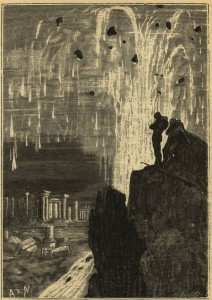
Professor Aronnax and Captain Nemo visit the ruins of the lost world of Atlantis
Illustration by Alphonse de Neuville and Edouard Riou
Source: Wikimedia Commons
We still don’t know much about what Earth looked like millions of years ago. But underwater lost worlds are popping up with increased frequency these days. The latest example is Mauritia. Unfortunately, I’m skeptical…very skeptical.
The Lost World of Mauritia?
Millions of years ago, Mauritia supposedly split off from Madagascar and made its way east, thanks to plate tectonics and sea-floor spreading. Eventually, this lost world sank to the bottom of the ocean. Now, a group of scientists claim to have found evidence for it. Unfortunately, the evidence is incredibly skimpy, consisting of twenty grains of zircons found in the sand on the island of Mauritius as well as an unusually thick sea-floor crust in the Indian Ocean.
Guerrilla Explorer’s Analysis
Twenty grains of zircons? That’s it? Good lord. Supposedly, these zircons were gathered from remote beaches, which reduces the possibility they were carried there by tourists. Plus, the odds of them being blown over from Madagascar are considered unlikely. But let’s be honest…what’s the more likely scenario? That the zircons originated from a sunken lost world? Or that they were inadvertently brought to Mauritius by folks from Madagascar or elsewhere?
Here’s more from Sid Perkins at Nature:
The drowned remnants of an ancient microcontinent may lie scattered beneath the waters between Madagascar and India, a new study suggests.
Evidence for the long-lost land comes from Mauritius, a volcanic island about 900 kilometres east of Madagascar. The oldest basalts on the island date to about 8.9 million years ago, says Bjørn Jamtveit, a geologist at the University of Oslo. Yet grain-by-grain analyses of beach sand that Jamtveit and his colleagues collected at two sites on the Mauritian coast revealed around 20 zircons — tiny crystals of zirconium silicate that are exceedingly resistant to erosion or chemical change — that were far older…
(See the rest at Nature)
The post The Lost World of Mauritia? appeared first on Guerrilla Explorer.
Related posts:
A Lost Underwater World?
Lost Ancient Megalithic Architecture?
Did the Incas visit the Old World?

February 23, 2013
Stanley Steamer: Fastest Steam Car in History?
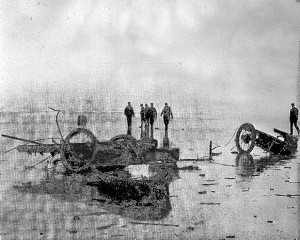
The demolished Stanley Steamer Steam Car
Attribution: Richard H. LeSesne (1907)
Source: Wikimedia Commons
In 1906, an automobile traveling 50 mph was considered extremely fast. Then Fred Marriott and the Stanley Steamer came along. The Stanley Steamer was a steam car, created by the Stanley Motor Carriage Company. In 1906, an early race car driver by the name of Fred Marriott used it to become the fastest driver in the world, topping out at 127.659 mph. He attempted to break the record in 1907 used an improved version of the steam car. Unfortunately, he hit a rut while traveling 140-150 mph. The steam car gained flight and when it hit ground, broke in half (see picture). Fred Marriott survived the crash but chose not to pursue another record.
Fred Marriott’s milestone was broken in 1910 when a Blitzen Benz, armed with a gasoline engine, reached 141.7 mph. However, he held the steam car land speed record for more than a century, until it was finally eclipsed by Charles Burnett III in 2009 with a mark of 139.843 mph. Here’s more from Daniel Vaughan at ConceptCarz.com.
The Stanley Brothers built their first steam-powered car in Watertown, Massachusetts in 1897. Within a decade, they created the ‘Fastest Car in the World,’ the Stanley Rocket. F.E. Stanley fathered the project, completing the design, build and test work in 1905. The Rocket made its public debut on Ormond Beach in January 1906.
The Stanley’s chose Fred Marriott, a daredevil racer, to pilot their car. The first day on the sand the car won the Dewar Trophy and set a record in the one-mile steam championship. The next day he set a record in a five-mile open race. On January 26th, Marriott set a one-kilometer record at 121.6 mph, the first person to traverse two miles in less than a minute. Two hours later, he upped it to 127.7, a record which lasted until 1910…
(See the rest at ConceptCarz.com)
The post Stanley Steamer: Fastest Steam Car in History? appeared first on Guerrilla Explorer.
Related posts:
The Turk: History’s First Chess Computer?
The Largest Mass Execution in American History?
Civil War Flying Machines?

February 22, 2013
QWERTY vs. Dvorak: The Fable of the Keys?

Description: Original QWERTY typewriter key layout
Attribution: U.S. Patent No. 207,559, issued August 27, 1878 to Christopher Sholes
Source: Wikimedia Commons
A few weeks ago, someone told me the QWERTY keyboard (named for its first six keys) was a mistake. There was another design that had proven more efficient, easier to use, and less likely to cause injuries like carpal tunnel. It’s called the Dvorak Simplified Keyboard and was created by Dr. August Dvorak and his brother-in-law Dr. William Dealey in 1936. Unfortunately, this miraculous invention never took off because people are resistant to change…or so the story goes.
It turns out the most favorable research for the Dvorak keyboard was conducted by none other than Dr. Dvorak himself. Later studies showed there wasn’t much to gain – if anything at all – from switching over from QWERTY. Advocates claim Dvorak has the edge in terms of ergonomic design but this isn’t clear. If a benefit exists, it appears to be a small one. Here’s more on QWERTY vs. Dvorak from The Independent Institute:
At a conference attended the other day by your reporter, a distinguished academic economist (who had better remain nameless) cited the “QWERTY” layout of the standard typewriter keyboard as a clear example of how markets “can make mistakes”. It may have been the millionth such reference. Many a textbook cites this case as proof of a certain kind of market failure — that associated with the adoption and locking-in of a bad standard. For years, if you cited an example of a “pure public good” (another kind of market failure), it had to be a lighthouse. If you needed a case of “positive externalities” (yet another), you would very likely go for beekeeping. In its field, QWERTY has achieved the same iconic eminence.
Which is only apt, because the tale of QWERTY is a myth — just like those other two cases. More than 25 years ago, Ronald Coase, a Nobel laureate, showed that when lighthouses were first built in Britain they were provided by private enterprise; tolls were collected when ships reached port. So lighthouses are not pure public goods. At about the same time Steven Cheung examined beekeeping and apple-growing in the state of Washington. He found that apple-growers paid beekeepers for their bees’ pollinating endeavours; those services were not, in fact, an unpriced “externality”…
(Read the rest at The Independent Institute)
The post QWERTY vs. Dvorak: The Fable of the Keys? appeared first on Guerrilla Explorer.
Related posts:
Calvin Coolidge: Did he save the U.S. Economy?
The Debate that Rocked the World?
What is the Report from Iron Mountain?

February 21, 2013
Why did the Poker Bubble Burst?

Why did the Poker Bubble Burst?
Description: “A Waterloo” (Dogs playing poker)
Source: Wikimedia Commons
In late 2003, the American poker industry exploded. New players flooded the game. Tournaments flourished. Poker games became a fixture on television. By 2008, the bubble had burst. People left the game in droves. Tournaments got smaller. Television programs ended up on the chopping block. So, why did this happen? What caused the poker industry to boom and bust? Curiously enough, the answer lies in money, or at least the Federal Reserve’s control over it. Here’s more from Peter C. Earle at the Ludwig von Mises Institute:
Nearly a decade ago, poker exploded in popularity. Between television programming, media coverage, and pop culture references to it—in particular, the Texas Hold ‘Em variant—the game became virtually unavoidable. The American Gaming Association estimates that nearly 1 in 5 Americans played poker in 2004, up 50 percent from 2003; also, that nearly 20 percent of those new players had begun to play within the previous two years.
The creation myth associated with the poker boom credits the improbable victory of a prophetically-named Tennessee accountant, Chris Moneymaker, in the 2003 World Series of Poker (WSOP). Other accounts source James McManus’s 2003 book Positively Fifth Street and the 1998 poker film Rounders. Still other, more mystical explanations refer to the game’s sudden “cultural resonance.”
But fads and surges of popularity come and go; these explanations hardly account for why, in a short amount of time, tens of millions of people suddenly flooded into a familiar—indeed, 150 year old—American card game, frenetically expending tens of billions of dollars on it. Nor do they explain why between 2007 and 2008 poker television programs were suddenly cancelled, tournaments saw a drop in participation, and many poker-related businesses scaled back or failed.
Austrian business cycle theory (ABCT) can, however, explain the origins and outcome of the poker bubble as well as its simultaneity with the housing boom, which, as will be demonstrated, are by no means coincidental…
(Read the rest at the Ludwig von Mises Institute)
The post Why did the Poker Bubble Burst? appeared first on Guerrilla Explorer.
Related posts:
Nine Men’s Morris – A Game for the Blizzard?
Calvin Coolidge: Did he save the U.S. Economy?
The Debate that Rocked the World?

February 20, 2013
Ghost Ship: Tracking down the Octavius Legend?
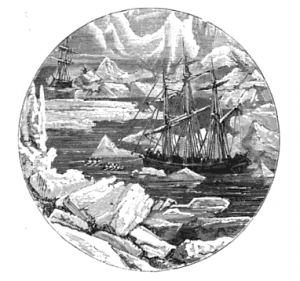
The Gloriana Ghost Ship (Octavius Legend)
Description: Illustration from The Blue Adventure Book (1905)
Source: The Blue Adventure Book (Digitized by Google Books)
According to legend, the Herald discovered a ghost ship named the Octavius near Greenland in 1775. They found the entire crew frozen at the helm. The captain’s log, last dated November 11, 1762, indicated the Octavius had been lost at sea for over 13 years. It had gotten trapped in the ice and somehow managed to successfully traverse the fabled Northwest Passage after the crew had succumbed to the frozen tundra.
A Possible Origin for the Octavius Ghost Ship?
I’ve spent the last few days tracking down the truth behind the legend. Yesterday, I was able to push the story back 1905, thanks to an entry in The Blue Adventure Book: A collection of Stirring Scenes and Moving Accidents from the World of Adventure. It tells a very similar story to that of the Octavius. Here’s more from me:
Back in 1775, John Warrens was captain of the Try Again. One day, he came across a ghost ship named the Gloriana. He boarded it and discovered a frozen crew. The log-book indicated the ship had spent the last 13 years as a floating coffin. So, we’ve got a similar story about a crew being frozen for 13 years. The date in the log-book, November 11, 1762, is the same as in the Octavius story. And we’ve also got the captain taking the log-book as proof while leaving the rest of the ship behind.
In the Gloriana tale, there’s no mention of the Northwest Passage. That, along with the Octavius moniker, appears to be a later addition. But otherwise, the stories are very similar. So, how much of the Gloriana ghost ship tale is accurate? Was it originally a work of fiction? If not, was it embellished over the years? Well, the Blue Adventure Book version was written in the first person. But no source is given. So, it could be a word-for-word copy of the original story or it could be a fictionalized entry.
An Earlier Source for the Octavius Ghost Ship?
After some digging, I managed to track down a much earlier source for this ghost ship story. There was a flurry of articles written about it in late 1828 and early 1829. The earliest version I’ve found so far was published on December 13, 1828 in a Philadelphia-based newspaper named The Ariel: A Literary and Critical Gazette. The article is entitled The Dangers of Sailing in High Latitudes. Here’s a taste:
Captain Warrens’ curiosity was so much excited, that he immediately leaped into the boat with several seamen, and rowed towards her. On approaching, he observed that her hull was miserably weatherbeaten, and not a soul appeared upon the deck, which was covered with snow to a considerable depth. He hailed her crew several times, but no answer was returned. Previous to stepping on board, an open port hole near the main chains caught his eye, and on looking into it, he perceived a man reclining back in a chair, with writing materials on a small table before him, but the feebleness of the light made every thing very indistinct.
The party, therefore, went upon deck, and having removed the hatchway, which they found closed, they descended to the cabin. They first came to the apartment which Captain Warrens had viewed through the port hole. A tremour seized him as he entered it. Its inmate retained his former position, and seemed to be insensible of strangers. He was found to be a corpse, and a green damp mould had covered his cheeks and forehead, and veiled his eye balls. He held a pen in his hand, and a log book before him, the last sentence in whose unfinished page thus, “11th Nov. 1762; We have been enclosed in the ice seventy days. The fire went out yesterday, and our master has been trying ever since to kindle it again but without success. His wife died this morning. There is no relief -”
Note that the time in the ice is seventy days here as opposed to seventeen days in the Blue Adventure Book version. Also, this version has Captain Warrens discovering the name of the ship (which is never given) after some detective work. The Blue Adventure Book version makes it clear that the name Gloriana is etched “in tall faded letters above her blistered stern.” But the stories are still almost identical in content. On a side note, this ghost ship story seems to get revived every few decades. It made another appearance around 1847, with similar articles being written as far apart as the Republican Advocate (Batavia, New York) and the South Australian Register.
Guerrilla Explorer’s Analysis
So, here’s where I stand. I’ve traced the Octavius ghost ship story back to 1828. That’s 77 years closer than I was yesterday. However, I’m still 53 years short of a primary source. If anyone has any pre-1828 information on this story, let me know. You might just help me solve a centuries-old ghost ship legend.
The post Ghost Ship: Tracking down the Octavius Legend? appeared first on Guerrilla Explorer.
Related posts:
Ghost Ship: A New Twist in the Octavius Legend?
Ghost Ship: The Mysterious Case of the Octavius?
Blackbeard’s Ship…Or Not?

February 19, 2013
Ghost Ship: A New Twist in the Octavius Legend?
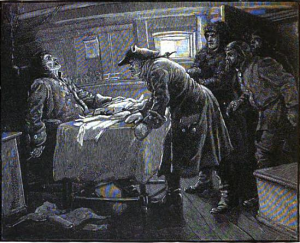
John Warrens discovers a frozen crew onboard the Gloriana Ghost Ship
Description: Illustration from The Blue Adventure Book (1905)
Source: The Blue Adventure Book (Digitized by Google Books)
Two days ago, I wrote about a ghost ship named the Octavius, which traversed the Northwest Passage with a frozen crew back in 1775. I’ve been curious about the Octavius for some time but have never been able to find a primary source documenting the story. After my article, Ralf Bülow pointed me toward a possible answer in the Nunatsiaq Online:
Last week I wrote about the mythical voyage of the Octavius through the Northwest Passage. Then this past weekend, while perusing some books on Arctic whaling, I came across a whaler’s tale that bears a striking similarity to the Octavius story. The name of the ship is different, and there is no reference to the mystery vessel having traversed the Northwest Passage. But the date of the alleged entry in the log-book of the ghost vessel is exactly the same – 11 November 1762…
Back in 1775, John Warrens was captain of the Try Again. One day, he came across a ghost ship named the Gloriana. He boarded it and discovered a frozen crew. The log-book indicated the ship had spent the last 13 years as a floating coffin. So, we’ve got a similar story about a crew being frozen for 13 years. The date in the log-book, November 11, 1762, is the same as in the Octavius story. And we’ve also got the captain taking the log-book as proof while leaving the rest of the ship behind.
All things being equal, this seems like a viable source for the modern Octavius ghost ship story. But the Nunatsiaq Online article was based on a 1937 book rather than source material. So, I did a little more digging. So, far the earliest reference I can find for the Gloriana ghost ship story comes from The Blue Adventure Book: A collection of Stirring Scenes and Moving Accidents from the World of Adventure, which was published in 1905:
It was in the middle of August, 1775 – I have cause enough to remember the date – that I, John Warrens, captain of the Greenland whaler Try Again, ran across the experience that I am going to tell, word for word, just as it happened. I can’t say i expect to be believed, though reckoned a truthful man; but I’m growing accustomed to that. My private consolation is that I never had half the wits enough to invent it; so if you don’t believe what I tell you for gospel, why, in a way, you’re only paying me a compliment after all…
The story purports to be a first-hand account. Unfortunately, The Blue Adventure Book doesn’t detail its sources. So, we’re 32 years closer to getting to the bottom of this story. Unfortunately, we’re still 230 years short of a primary source. If anyone has any information, let me know. Who knows? Maybe we can solve the mystery of the Octavius ghost ship legend once and for all
The post Ghost Ship: A New Twist in the Octavius Legend? appeared first on Guerrilla Explorer.
Related posts:
Ghost Ship: The Mysterious Case of the Octavius?
Blackbeard’s Ship…Or Not?
The Ship that Nearly Sank America

February 18, 2013
Who was America’s Greatest President?
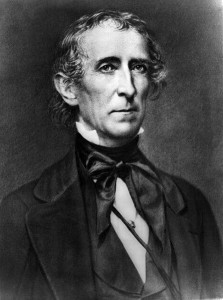
Was John Tyler the Greatest President in U.S. History?
Source: Wikimedia Commons
So, today is President’s Day, the day when Americans honor the institution of the presidency and ask that time honored question: “Who is America’s greatest President?” Really? What a waste of time. It reminds me of the classic kid/parent argument:
Kid: “Why is there a Mother’s Day and a Father’s Day but not a Kid’s Day?”
Mom & Dad: “Because everyday is Kid’s Day.”
Do we really need to give high-ranking politicians their own holiday? Good lord, no. I prefer to celebrate a different type of president today, namely entrepreneurs like Nikola Tesla, Henry Ford, and Steve Jobs.
But since the rest of the country is debating the likes of Lincoln and Washington, we might as well add our two cents to the issue. So, who is America’s greatest president? Regardless of political affiliation, scholars almost always rank Abraham Lincoln, George Washington, and Franklin Delano Roosevelt as America’s three greatest presidents in no particular order.
That means they’re the greatest right? It depends on how you define “great.” Here’s a different view from Lew Rockwell at LewRockwell.com.
There have been four huge surveys taken of historians’ views on the presidents: in 1948, in 1962, in 1970, and in 1983. Historians were asked to rank presidents as Great, Near Great, Average, Below Average, and Failure. In every case, number one is Lincoln, the mass murderer and military dictator who is the real father of the present nation. His term was a model of every despot’s dream: spending money without Congressional approval, declaring martial law, arbitrarily arresting thousands and holding them without trial, suppressing free speech and the free press, handing out lucrative war contracts to his cronies, raising taxes, inflating the currency, and killing hundreds of thousands for the crime of desiring self-government. These are just the sort of actions historians love…
Most historians value power accumulation when ranking the greatest presidents. Charisma and crisis confrontation are also considered important. Practically no one values minimal government or the ability to avoid crises. And yet some presidents did fairly well in these areas. These libertarian-type presidents were usually dull and didn’t spend years fighting wars or recessions. Instead, their terms were marked by peace, prosperity, and the respecting of individual liberties. Their ranks include Grover Cleveland as well as Rutherford B. Hayes. Using this definition of greatness (peace, prosperity, and the respecting of individual liberties), the greatest president of all time just might be the little-known John Tyler:
John Tyler was the 10th President of the United States. He was known as “His Accidency,” on account of the fact that he took over after William Henry Harrison’s untimely death. Most of his cabinet resigned during his term and his own party expelled him from its membership. According to Wikipedia, an aggregate of various scholarly polls rate Tyler as one of the worst presidents of all time. Heck, even the extremely controversial George W. Bush outranks him. Who would possibly consider President John Tyler #1?
(See the rest right here at Guerrilla Explorer)
The post Who was America’s Greatest President? appeared first on Guerrilla Explorer.
Related posts:
Who was the Greatest President?
Grover Cleveland: The Greatest President?
President John Tyler and Ron Paul?

February 17, 2013
Ghost Ship: The Mysterious Case of the Octavius?
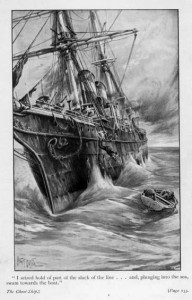
Do Ghost Ships Exist?
Description: Illustration from The Ghost Ship by John Conroy Hutcheson (1901)
Attribution: Henry Austin
Source: Wikimedia Commons
On October 11, 1775, the Herald came across a strange ghost ship named the Octavius near Greenland. Upon closer inspection, they discovered the entire crew frozen at the helm. The captain’s log, last dated November 11, 1762, indicated the Octavius had been lost at sea for over 13 years.
Amazingly enough, the log revealed the Octavius had attempted to become the first ship to successfully traverse the fabled Northwest Passage. Apparently, it got trapped in the ice and only completed the passage after the crew had succumbed to the frozen tundra. The Herald took the log but otherwise left the ship untouched. The Octavius was never seen again. Presumably, it’s still out there somewhere, trapped in an endless sea of ice.
It’s quite a story…but is it real? Unfortunately, I haven’t been able to find a primary source to substantiate it. And there are no records of the log either. Still, I’m looking for them, among others. Tracking down a real-life ghost ship has long been a dream of mine. But in the meantime, we’ll just have to enjoy the stories. Here’s more from Ghost Ships of the World:
In 1761, a sailing ship named The Octavius departed London loaded with cargo bound for China. Having safely arrived at it’s destination and taking on another load for the return trip, the captain decided to take advantage of the unusually warm weather and chance an attempt at the shorter route via the northwest passage which until that point, had never been done successfully. So in 1762, The Octavius departed China with a load of goods for the return trip to the Atlantic and headed northward to attempt an Arctic passage. The ship made it through the passage… thirteen years later as a ghost ship…
(See the rest at Ghost Ships of the World)
The post Ghost Ship: The Mysterious Case of the Octavius? appeared first on Guerrilla Explorer.
Related posts:
Blackbeard’s Ship…Or Not?
The Lost Franklin Expedition?
The Ship that Nearly Sank America

February 16, 2013
Hot Hand: Is it a Reality or a Fallacy?
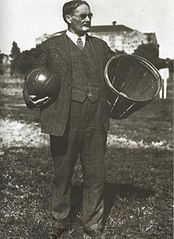
Hot Hand: Reality or Fallacy?
Description: Dr. James Naismith (the inventor of basketball) with a basketball and a basket
Source: Wikimedia Commons
College basketball season is in full swing. Everywhere you look, an announcer or writer is screaming about players going on streaks, making lots of shots in a row. In other words, having a hot hand. There’s just one problem. The hot hand is a myth. There’s no evidence to support it. It’s similar to the gambler’s fallacy. Say you toss a coin into the air and it comes up heads ten times in a row. Many gamblers believe this means tails are due. But each coin flip is an independent event. So, the odds of flipping a tail are still just 50%. Statistically speaking, basketball is the same way. Here’s more from the New York Times:
Those who play, coach or otherwise follow basketball believe almost universally that a player who has successfully made his last shot or last few shots – a player with hot hands – is more likely to make his next shot. An exhaustive statistical analysis led by a Stanford University psychologist, examining thousands of shots in actual games, found otherwise: the probability of a successful shot depends not at all on the shots that come before.
To the psychologist, Amos Tversky, the discrepancy between reality and belief highlights the extraordinary differences between events that are random and events that people perceive as random. When events come in clusters and streaks, people look for explanations; they refuse to believe they are random, even though clusters and streaks do occur in random data.
”Very often the search for explanation in human affairs is a rejection of randomness,” Dr. Tversky said…
(See the rest at the New York Times)
The post Hot Hand: Is it a Reality or a Fallacy? appeared first on Guerrilla Explorer.
Related posts:
What is the Dead Man’s Hand?
Jimmy Stewart & the Raiders of the Yeti Hand?
The Science behind Serial Killers?

February 15, 2013
Mean Valentines: Telling Someone You Don’t Care?

An example of Vinegar Valentines (aka Mean Valentines)
Source: Wikimedia Commons
Valentine’s Day is over, but there’s still a chance to tell others you DON’T care. Valentine’s Day cards weren’t always about love. Vinegar valentines (aka mean valentines) were popular in the mid 19th century. They seem to have died off around the 1940s to 1950s.
Mean Valentines were sometimes used to reject would-be lovers. Other times they were sent anonymously to annoying people. Don’t like that stuck-up clerk? Send her a card. Don’t care much for the bald guy down the block? Send him a mean Valentine. Think women need to get out of the voting booth? Tell her via anonymous card. The best part was that prior to 1840, the receiver paid postage for mail. So, early recipients of mean Valentines probably paid for someone to insult them. Here’s more on mean valentines from Lisa Hix at Collectors Weekly:
With all the hand-wringing over anonymous commenters and social-media trolls, you’d think the Internet is to blame for all the woes of humanity. After all, what could people do with their ugly, mean thoughts before they had Yelp, Reddit, or Tumblr to help broadcast them? But as far back as the 1840s until the 1940s, they could send them in a Vinegar Valentine. Yes, that’s right. For almost as long as Valentine’s Day has been an insufferably sappy day celebrating romantic love, it’s also been a day for telling everyone else exactly how much you don’t love them—with an anonymous poem sent via post.
At first, it’s easy to demonize the senders as the worst sorts of trolls or bullies. I mean, some of the most horrifying Vinegar Valentines actually suggest the recepient kill him or herself. But then, if you look at the more light-hearted Valentines, some of them start to seem like a good idea. Have you ever had a haughty saleslady scoff at you for being poor? Have you ever had to listen to a pompous windbag carry on when he doesn’t have any idea what he’s talking about? So many people are blithely unaware of their obnoxious behavior. Wouldn’t it feel great to tell them off, consequence-free?
(See the rest at Collectors Weekly)
The post Mean Valentines: Telling Someone You Don’t Care? appeared first on Guerrilla Explorer.
Related posts:
The St. Valentine’s Day Massacre?
How much is the Oldest Baseball Card Worth?
Battle of the Presidents: Obama vs. Hayes?




